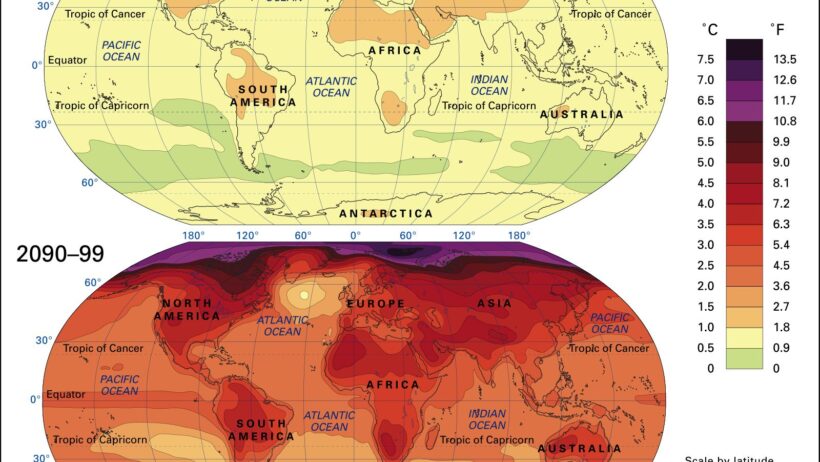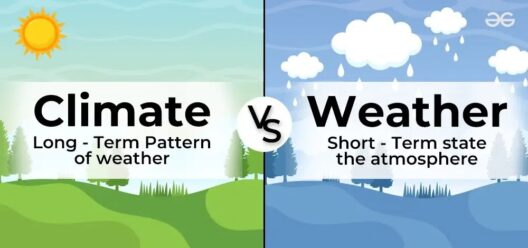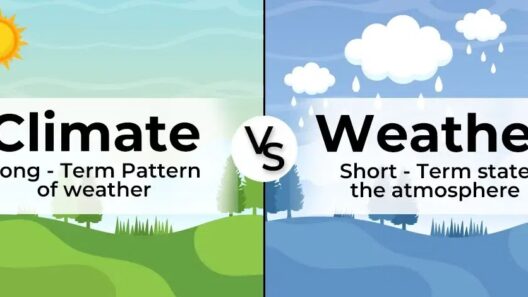In the contemporary discourse surrounding climate science, a pivotal question emerges: Does global warming induce climate change, or is it the converse? To unpack this intricate relationship, one must delve into the definitions and mechanisms of both phenomena, recognizing the nuanced interplay between them.
Global warming is characterized by the long-term increase in Earth’s average surface temperature due primarily to human-induced greenhouse gas emissions. This phenomenon serves as a principal component of climate change but is often conflated with it. Climate change encompasses a broader spectrum of alterations in climate patterns—not merely temperature increases but also shifts in precipitation, weather extremes, and ecological disruptions.
The crux of the debate hinges on the causal relationship between global warming and climate change. Proponents of the idea that global warming precipitates climate change frequently cite empirical data demonstrating rising temperatures correlating with escalated weather irregularities. For instance, the increase in average surface temperatures has been assiduously documented, revealing a notable trend of warming since the late 19th century. Correspondingly, records indicate a surge in climate-related anomalies: heightened occurrences of hurricanes, droughts, and floods have been observed globally. Thus, these advocates assert that global warming acts as a catalyst for these disturbing changes in the climate.
Conversely, some skeptics posit that climate change is not solely the offspring of global warming but also a product of natural variability within Earth’s climate systems. Indeed, Earth has experienced climatic fluctuations throughout its geological history due to various factors such as volcanic activity, solar radiation shifts, and ocean circulation patterns. These skeptics argue that attributing contemporary climate phenomena exclusively to anthropogenic causes overlooks the complexity of Earth’s climatic feedback mechanisms.
However, dismissing the human impact on the current climate crisis undermines mounting scientific consensus. Numerous studies utilize climate models to simulate various scenarios, assessing the likelihood of climate events. Such models depict an alarming reality: the probability of extreme weather occurrences escalates significantly in scenarios where anthropogenic greenhouse gas emissions are at play. Consequently, while natural variability does contribute to climate change, the rapid and unprecedented nature of current alterations strongly implicates global warming as a substantial driver.
A crucial aspect of understanding this dynamic involves examining feedback loops within the climate system. For example, as global temperatures rise due to increased greenhouse gases, polar ice melts, leading to diminished albedo effect. This reduction means less solar radiation is reflected back into space, further exacerbating warming—a vicious cycle with far-reaching implications. Additionally, as oceans warm, they release carbon dioxide, a process that amplifies the greenhouse effect. Such self-reinforcing feedback loops illustrate the ways global warming perpetuates climate change, creating a tenuous cycle that challenges mitigation efforts.
The implications of understanding this relationship cannot be overstated. If global warming is acknowledged as the primary conductor of climate change, it underscores the urgency of reducing emissions. It compels policymakers and individuals alike to rethink strategies aimed at curbing greenhouse gas outputs. As new technologies and renewable energies gain traction, there lies a significant opportunity for transformative shifts toward sustainability. This transition is not merely an option but a necessity to avert the calamitous outcomes of unchecked warming and resultant climate change.
Additionally, recognizing the directionality of these phenomena allows for informed discourse among stakeholders. For instance, if global warming is to be viewed as a primary influencer on climate change, it necessitates a reexamination of agricultural practices, water management, and urban infrastructure planning. These sectors must adapt to increasingly volatile climate conditions, redesigning systems to enhance resilience against extreme weather patterns.
Moreover, educational initiatives play a crucial role in shifting public understanding. Engaging communities with empirical findings fosters a more profound appreciation for the interconnections between global warming and climate change. Such awareness can cultivate grassroots movements advocating for policy reform and environmental stewardship. In this vein, increased scientific literacy positions societal interactions with the environment on a more sustainable path, ultimately aligning collective efforts toward combating these intertwined issues.
It is essential to remain cognizant not only of what causes climate change but also of its impacts. Biodiversity, human health, and food security are all at stake as climate-induced changes reshape ecosystems. Species migration patterns shift, habitats are obliterated, and agricultural yields fluctuate, all tied back to the warming planet. Thus, a comprehensive understanding of these phenomena serves as a clarion call for immediate action. Failure to acknowledge the intricate ballet between global warming and climate change may result in disastrous consequences that extend beyond mere atmospheric warming.
In conclusion, the relationship between global warming and climate change is not a matter of semantics; it is foundational to effective environmental policy and action. The prevailing evidence supports the assertion that global warming is indeed a principal driver of climate change. Acknowledging this relationship emboldens efforts to mitigate climate crises and strive for a sustainable future. Only through a concerted, informed response can humanity hope to navigate the treacherous waters of environmental change and secure a habitable planet for future generations.







